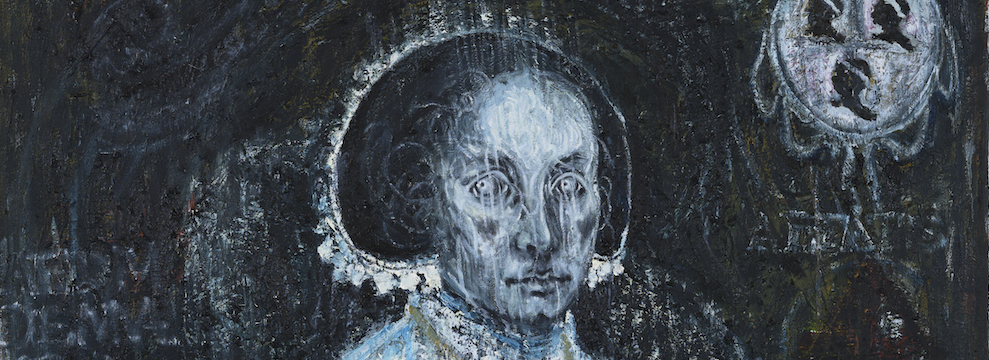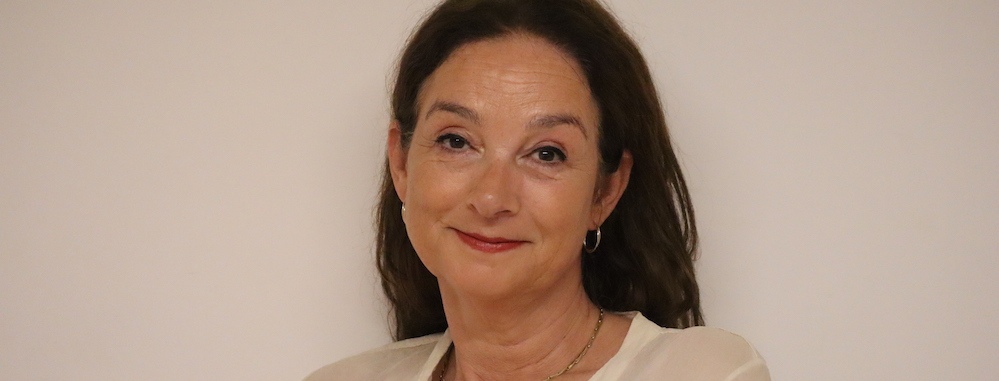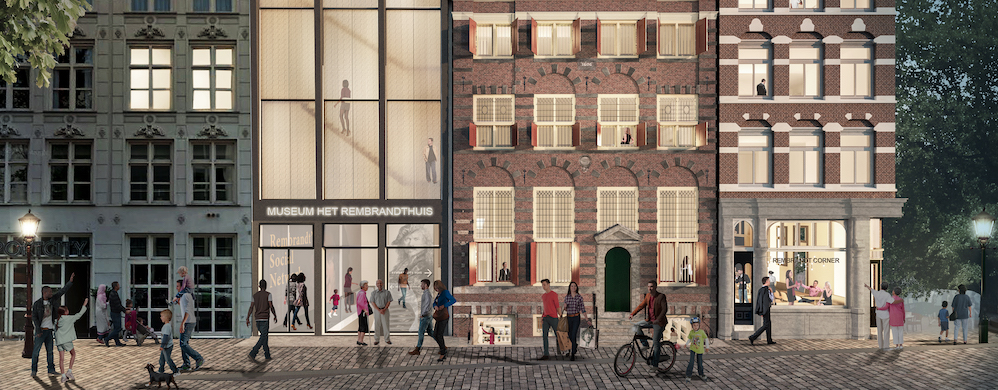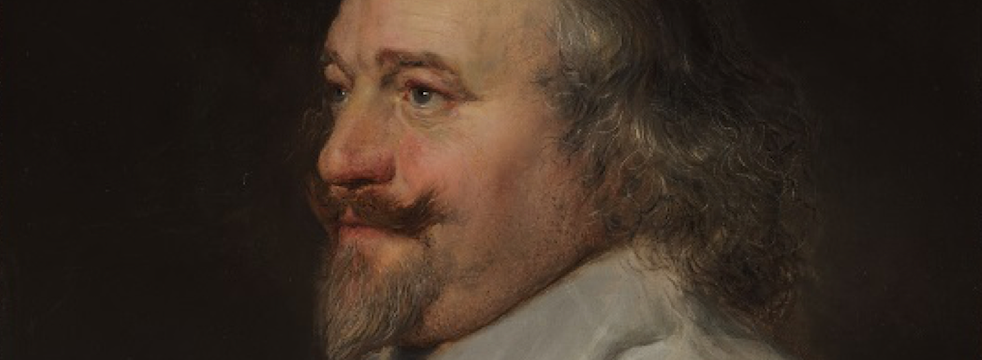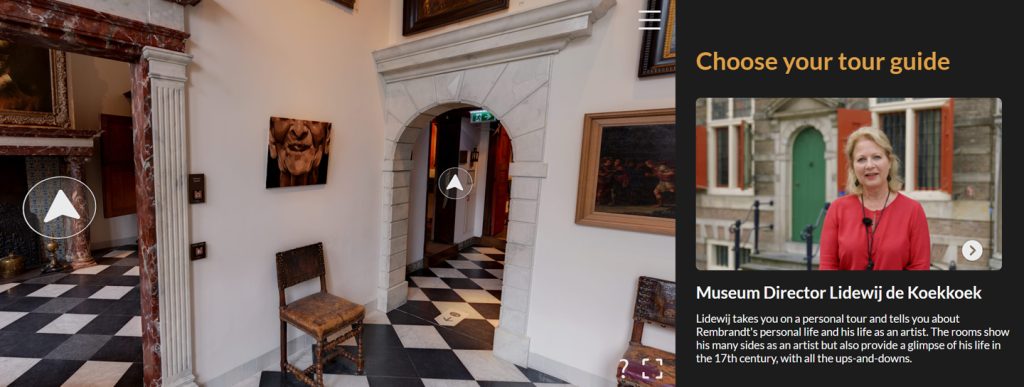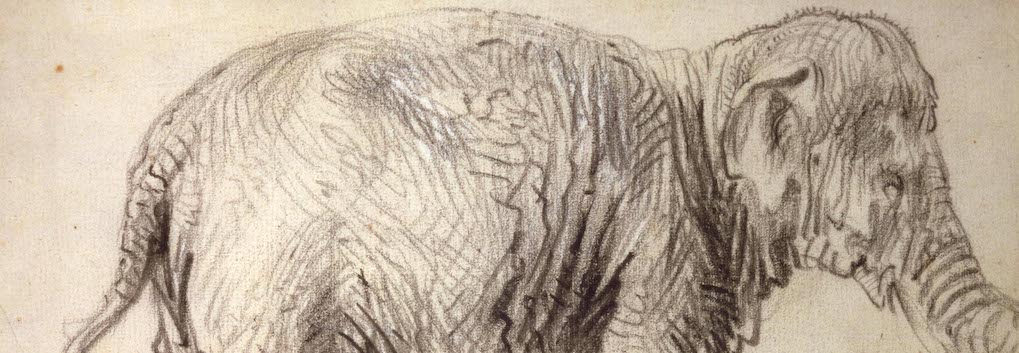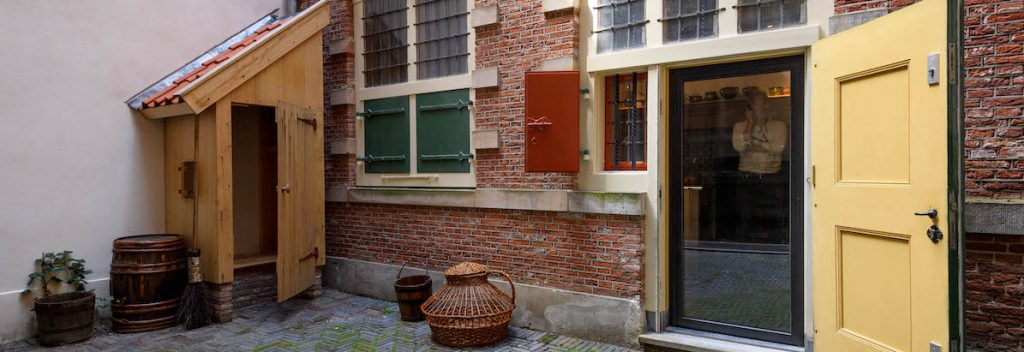News
New Acquisitions: Natasja Kensmil and Milan Gies
The museum has acquired four contemporary artworks: the portrait Clara Abba by Natasja Kensmil and three photos from the series Composition by Milan Gies. With these pieces we are adding new perspectives to our permanent collection. The works of art were on view in our exhibition ‘RAW’, in the Spring of 2022. Epco Runia, Head of Collection & Education at The Rembrandt House Museum: ‘What we find special about these artworks, is that they allow you to look at Rembrandt from a new perspective. Natasja Kensmil takes the wealthy women we know so well from seventeenth-century portraits as her subjects, but shows a side of their history that remains invisible in Rembrandt’s work. The moving photos Milan Gies made of homeless men make you aware of the physical traces that life on the street leaves behind. In this way, the life of the ‘street figures’ in Rembrandt’s etchings also becomes more tangible. With their contemporary gaze, Kensmil and Gies shed new light on Rembrandt and his time; not through direct imitation, but because they deal with similar themes. That’s what we’re interested in at The Rembrandt House Museum.’
Natasja Kensmil’s (1973) portrait Clara Abba is part of the artist’s series Monument of Regents. In these works, Kensmil breaks through the polished image of seventeenth-century patrician women. These women enjoyed significant social status and often occupied themselves with charitable works. The artist draws attention to the dark side. These governors of charitable institutions had their portraits made with extra white skin, thus promoting whiteness as an ideal of beauty. Kensmil also wonders: ‘How aware were these women that part of the capital they used for their charitable works came from overseas colonies?’ The title of the painting, Clara Abba, refers to the patrician woman who was on the board of the leper house in the Jodenbreestraat. The painting itself is an archetype, made up of elements from various portraits of patrician women from the seventeenth century. The men in Milan Gies’ (1977) series Composition cannot cope in our achievement-oriented society, for various reasons. They have become homeless, in some cases addicted or sick as well. Gies is particularly fascinated by ‘the narrative body’. He is concerned with the signs left by traumatic experiences, pain and mental problems. The key question is: ‘can you recognize inner struggles and physical pain in a look or the way someone moves?‘ Gies has been photographing these men, who are largely invisible in our society, for years.
MILOU HALBESMA NEW DIRECTOR OF THE REMBRANDT HOUSE MUSEUM
On Monday 11 April 2022 it was announced that Milou Halbesma will become Director of The Rembrandt House Museum in Amsterdam as of 1 June 2022. Milou Halbesma (1967) studied French and Art History at Grenoble University, after which she obtained a Master’s degree in Economics (VU Amsterdam). She also attended the Getty Leadership Program in Los Angeles. Halbesma held various director and management positions at, among others, the Centraal Museum in Utrecht, the Turing Foundation and the VandenEnde Foundation. From 2013 to 2020, she was Director of Public Affairs at the Van Gogh Museum, where she was responsible for the museum’s visitors, revenue and reputation. She also gained extensive administrative experience as a board member of the Zaans Museum and as a board member — and later chair — of the Van Gogh Europe Foundation. She is currently a member of the Supervisory Board of the Hortus Botanicus in Amsterdam. Halbesma attaches great importance to talent and diversity, and knows better than anyone the constant search for the right balance between art and entrepreneurship. She lives in Amsterdam and is the mother of two daughters.
Milou Halbesma: ‘The Rembrandt House Museum is the place to meet Rembrandt and to better understand the artist and his work. It is a great honor for me to be able to work for Rembrandt, after having worked for Van Gogh for many years — two of the greatest Dutch artists of all time. The Rembrandt House Museum is entering an exciting era, starting with the renovation at the end of 2022. I can’t imagine a better time to start and contribute on all fronts to the future of the museum.’
START RENOVATION MUSEUM: AUTUMN 2022
Exciting news for the museum: a start date has been announced for the renovation! In November 2022, The Rembrandt House Museum will close its doors for three months in order to make our plans for a more accessible, complete, multi-voiced and sustainable museum a reality. Five new spaces will be added, which will ensure that visitors will experience Rembrandt’s story more intensely. We will also bring back the popular etching and paint preparation workshops in a specially designed space, create both a prologue and epilogue space where the story of Rembrandt’s bankruptcy and the history of the building are told, and add a third exhibition room. In addition, we want to develop a new, multi-voiced multimedia tour in twelve languages, which will give visitors more insights in Rembrandt’s life and time. For more information about our so-called Masterplan and how you can support the museum, visit this page: https://archief.rembrandthuis.nl/nl/steun/
Recently discovered portrait Jan Lievens makes debut in The Rembrandt House Museum
A newly discovered portrait by Rembrandt’s friend and fellow artist Jan Lievens (1607-1674) makes its debut in The Rembrandt House Museum. Portrait of a Man with a Gold Chain is the only known painted portrait by Lievens from his Antwerp period. The painting, a loan from David and Michelle Berrong-Bader, is on view in the Sael, Rembrandt’s former living room.
Jan Lievens worked alongside Rembrandt in Leiden, until he left for England in 1632 and proceeded to Antwerp in 1634. Lievens was a praised and sought-after portrait painter. There are some beautiful portraits from his Antwerp period, but only drawings. With this previously unknown portrait, discovered in an auction only last year, we now have for the first time an impressive finished portrait painting from these years. It combines striking elements from his early years working alongside Rembrandt in Leiden: forcefulness, texture, and intense scrutiny of the face, with the fluid and smooth effects of his time working with Anthony van Dyck in Antwerp. While we do not yet know who the man on the painting is, his golden chain attests to considerable status. The collar and the pointed beard with a turned-up moustache correspond closely with Antwerp fashion of circa 1637, as seen in Lievens’s drawn portrait of Jan Davidsz. de Heem. Amsterdam fashion differed significantly, emphasizing lace collars with scalloped edges.
THE REMBRANDT HOUSE MUSEUM RECEIVES HALF MILLION EURO THANKS TO PARTICIPANTS VriendenLoterij
A welcome contribution for the necessary renovation of the museum!
Big news for The Rembrandt House Museum Today, during a broadcast of the morning tv show Koffietijd, Lidewij de Koekkoek, director of the museum, was surprised by Loretta Schrijver with a check for 500,000 euros from the VriendenLoterij. A welcome contribution for the museum after a difficult time due to the corona crisis. The contribution will be used for the renewal of the presentation and expansion of the museum, contained in a Master Plan. In total, thanks to its participants, the VriendenLoterij was able to contribute almost 134 million euros in 2021 to the preservation of cultural heritage and the well-being of people.
“The Rembrandt House Museum, Rembrandt’s old residence and studio, brings the story of Rembrandt to life in a special way. After a difficult time, due to the prolonged lockdowns and the lack of international visitors, the museum has now fortunately been able to open its doors again and the public can enjoy this special place again. We are proud that, thanks to our participants, we can support the museum with a contribution of 500,000 euros, so that a visit to the former home and studio of this great artist becomes more accessible, richer and more interesting for the public,” said Dorine Manson, managing director of the VriendenLoterij.
Lidewij de Koekkoek, director of The Rembrandt House Museum is pleasantly surprised: “What great news and what a generous contribution. We can now realize our dream of a renovation in the autumn. We’re finally moving towards a more extensive, more accessible, more sustainable and more varied museum for everyone. I would like to thank all participants and employees of the VriendenLoterij and my fantastic team at The Rembrandt House Museum! Together we can preserve Rembrandt’s house for future generations.”
Nearly 134 million euros for culture and well-being
The VriendenLoterij celebrates what makes life beautiful: our connection with others and with our art and culture. Thanks to the 1.1 million participants, the VriendenLoterij was able to donate almost € 134 million over 2021 to 57 cultural partners and almost 3500 charities, clubs and associations.
Lidewij de Koekkoek new director of the Frans Hals Museum
We congratulate Lidewij de Koekkoek on the appointment as general director of the Frans Hals Museum. As of March 1, 2022, she will succeed the current director Ann Demeester.
Lidewij de Koekkoek has been the director of The Rembrandt House Museum since 2016. She lead the museum into a new artistic course, with a focus on Rembrandt as a person and artist. An important pillar of her leadership was the incorporation of more diversity, inclusion and multiple perspectives, both on a project basis and in collaborations with, among others, Musea Bekennen Kleur and the participation in the international program OFBYFOR ALL. Under her leadership, the entrance area of the museum was also renovated in 2018, various museum spaces were added to the museum and the offices were moved to the adjacent ‘Uylenburgh’ building. In addition, the ‘Masterplan’ development for a major renovation and expansion of the museum complex has been completed.
Lidewij de Koekkoek: ‘After more than five exciting years at The Rembrandt House Museum, with great successes such as the Rembrandt Year 2019 and serious challenges such as the corona crisis, this is a great new step for me. However, The Rembrandt House Museum and its staff will always hold a special place in my heart. I will miss walking through Rembrandt’s studio and home and seeing what an impact the monumental building and the varied exhibitions make on our visitors. The Rembrandt House Museum is an artistic place of pilgrimage for both Amsterdammers and a wider national and international audience. I therefore leave the museum with full confidence in a positive future with new, inspiring leadership.’
Visit Rembrandt’s house in 360 degrees
A visit to The Rembrandt House Museum is now possible for everyone through a virtual 360 experience. In ultra-sharp image quality, you will be personally guided through the rooms of Rembrandt’s historic house and get to know the artist better. In front of the museum you will be welcomed by Lidewij de Koekkoek, director of The Rembrandt House Museum. Especially for young people there is also a tour available in Dutch by Julia Alvares. New tour guides will be added next year.
The guides will show you Rembrandt’s house and tell you about Rembrandt’s personal life, his family, his clients and his students. Then you can click on interactive elements yourself and discover even more. In the etching room you can watch a demonstration of how Rembrandt made his etchings. In Rembrandt’s studio you will learn how the artist prepared his own paint. Those who prefer to view some works of art up close can visit the print room. A visit to Rembrandt’s small office is unique: you cannot enter this space in the museum, only virtually through the 360 experience.
Click here to visit our 360 Experience
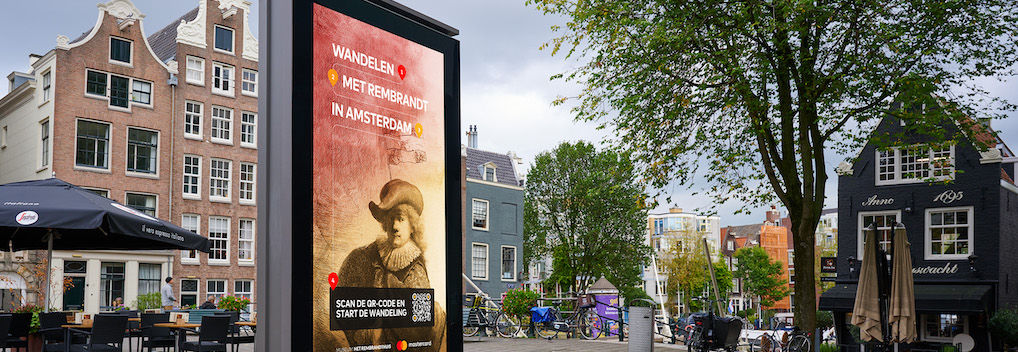
Walking with Rembrandt
Together with Mastercard, we have developed a virtual walk in which you can explore the city with Rembrandt. Discover where Rembrandt bought the curiosities for his art room, where his patrons lived, where the painters’ guild of Amsterdam was located and where Rembrandt is buried. You don’t need anything for this free virtual walk, except a smartphone (and maybe a pair of comfortable shoes…). You can view the walk from home, or follow the route through Amsterdam on foot. Visit https://wandelenmetrembrandt.nl/en/ and go out with Rembrandt!
Hansken documentary on Vimeo
Did you miss our exhibition about the elephant Hansken? We made a documentary about her incredible story in which we take you on a tour of the exhibition. This exclusive 15 minute film can be viewed for only 4,99 euro/4,99 dollar on Vimeo. Dive into the seventeenth century and support our museum as well! Watch it here: https://vimeo.com/ondemand/hansken.
Restored: Painting by Ferdinand Bol
The painting Elisha Refusing Naaman’s Gifts (1661) has recently been smartened up by conservators and a team of experts. Now it can be seen in all its beauty in The Rembrandt House Museum. That is great news, because it is an important work of art for the museum. It was painted by one of Rembrandt’s most successful pupils: Ferdinand Bol. He made the painting for the Amsterdam Lepers’ Asylum, which was located in the Jodenbreestraat. Fittingly, the painting depicts a story from the Bible about leprosy.
The painting had last undergone extensive treatment in 1945. Meanwhile, the canvas showed a number of cracks and the paint curled up in a number of places. To prevent the paint from peeling there, it had to be flattened and secured. In addition, the varnish layer was dirty and old overpaints discoloured. These needed to be removed and replaced. This process also revealed original changes made by Ferdinand Bol himself. To find out more, take a look on this page.
The conservation treatment Ferdinand Bol’s ‘Elisha Refusing Naaman’s Gifts’ from 1661 (longterm loan from the Amsterdam Museum) was made possible due to financial support from the Vereniging Rembrandt (thanks in part to its BankGiro Loterij Restauratiefonds) and the BROERE CHARITABLE FOUNDATION.
Back to then: the courtyard
We set up a new space in The Rembrandt House Museum: the courtyard. Immediately upon entering the museum you get an impression of what this place must have looked like in Rembrandt’s time. The eye-catcher is the outhouse, Rembrandt’s toilet.
Not everyone had their own outhouse at their disposal. One could relieve themselves in bowls (made for this specific use). And there were several public toilets in the city. Rembrandt did have his own outhouse in his courtyard. We know that because in the winter of 1996 an old cesspool was discovered in the ground there. In addition to feces, cesspools also collected household waste that was disposed of with ease. For that reason, they often contain valuable information about past habitation. When archaeologists emptied the cesspool of Rembrandt’s house in 1997, they found various utensils from the period in which Rembrandt lived and worked in the house. Among them were two pots, which Rembrandt used in his painting studio. New material-technical research into the remains on the inside of the pots confirmed this in 2019. These two pots have been on display in Rembrandt’s studio ever since.
The courtyard has been designed in collaboration with architectural historians, with a new outhouse in the place where it must have been in the past: right above the cesspool. In the courtyard you can also see objects related to the household work that took place in such a courtyard: a rain barrel, buckets, a broom and a goose basket. This redesign was made possible with the support of the Friends of The Rembrandt House Museum.
DONATION: PAINTING BY FERDINAND BOL
Like so many museums and cultural institutions, The Rembrandt House Museum faces great difficulties due to the corona crisis. This is why Willem Jan Hoogsteder – collector, dealer and chair of the Hoogsteder Museum Foundation – together with his wife Karin Hoogsteder decided to support the museum in a special way: with the gift of a painting from their private collection. The painting Shepherdess in a Landscape was made in 1641 by Ferdinand Bol, one of Rembrandt’s most famous pupils. This work will go on view as the museum reopens, in the Salon, the room where Rembrandt lived and slept, in The Rembrandt House Museum. In the same house, Ferdinand Bol took instruction from Rembrandt in the seventeenth century.
NEW ADDITIONS TO REMBRANDT’S HOME
There will be much new to see shortly in Rembrandt’s old house. Besides the recent gift of a painting by Ferdinand Bol, there is a parade of two new additions of old masters on the walls.
A merry company by Adriaen Brouwer, Peasants Playing Cards in a Tavern from 1624/25 has made its entrance in the former living room. We know that Rembrandt collected works by the Flemish Brouwer, including a “piece with players”. It remains unknown, if this was that artwork. The painting is a long term loan from the art dealer Sander Bijl. A couple of steps further, in the entrance hall, a black man proudly looks out to us in the painting The Baptism of the Eunuch from 1630-36 by Rembrandt and assistants, a loan from the collector couple George and Ilone Kremer. Under the upper, colourful paint layer that was executed by Rembrandt’s assistants, something special is hidden: a sketch by Rembrandt himself.


